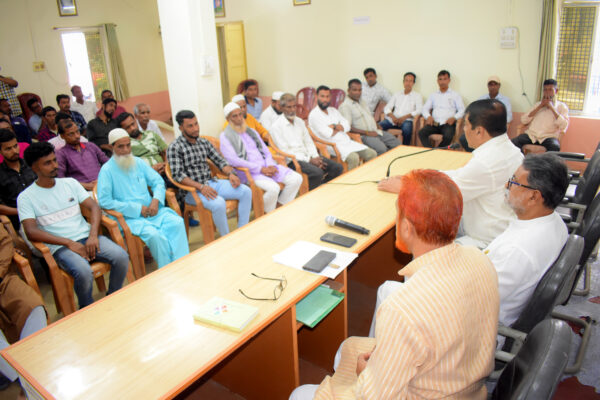- NET Web Desk
Sikkim is celebrating its ‘Statehood Day’ today, i.e., May 16; recognizing its integration with India and emerging as the 22nd state of the Indian Union; thereby abolishing the monarchy system.
Residents of these states have portrayed togetherness and brotherhood, demonstrating their ability to overcome any obstacle. The northeastern state has repeatedly demonstrated its inventiveness and skills to boost India’s prominence. It has made great strides in areas like organic farming.
During this auspicious occasion, Prime Minister – Narendra Modi; along with the President – Ram Nath Kovind, Sikkim Chief Minister – Prem Singh Tamang (Golay), Governor – Ganga Prasad and other political stalwarts extended their heartfelt wishes to the citizens and applauded their potential in bringing an all-round development among the masses.
Statehood Day greetings to my sisters and brothers of Sikkim. The people of Sikkim have distinguished themselves in diverse fields and are making rich contributions to national progress. May the people of the state be blessed with happiness and good health.
— Narendra Modi (@narendramodi) May 16, 2022
Greetings to the people of Sikkim on Statehood Day. Sikkim has set an example before rest of the country in organic farming and adopting the path of sustainable development. My best wishes to all the residents of Sikkim for continued growth and prosperity.
— President of India (@rashtrapatibhvn) May 16, 2022
सिक्किम के स्थापना दिवस पर प्रदेशवासियों के उज्ज्वल और सफल भविष्य की कामना करता हूं। प्रकृति की अनुपम सौंदर्य-संपदा वाला यह प्रदेश भारत की विविधता को समृद्धि प्रदान करता है। यहां के उद्यमी निवासियों ने जैविक कृषि के क्षेत्र में अनुकरणीय उदाहरण स्थापित किए हैं।
— Vice President of India (@VPSecretariat) May 16, 2022
Greetings to our hardworking sisters and brothers of Sikkim on their statehood day. This state is known for its great culture and immense natural beauty. I pray for Sikkim’s progress in the years to come.
— Amit Shah (@AmitShah) May 16, 2022
Blessed by Bhagwan Siddheshwar and Gautama Buddha, Sikkim is known for its snow-capped mountains and scenic valleys.
Best wishes to Hon’ble CM Shri @PSTamangGolay and people of the beautiful mountainous land on Statehood Day.
— Himanta Biswa Sarma (@himantabiswa) May 16, 2022
To the wonderful people of Sikkim, greetings and best wishes on your statehood day.
Blessed with bounty of nature and home to rich culture, Sikkim has contributed enormously to nation’s pride & progress. I wish the state continues to make rapid strides in years ahead. pic.twitter.com/dXeTBVG9Kv
— Pema Khandu པདྨ་མཁའ་འགྲོ་། (@PemaKhanduBJP) May 16, 2022
On the occasion of State Day 2022, I extend my heartiest greetings to all the Sikkimese people. On this fateful day, Sikkim opted for democracy and from that moment onwards, Sikkimese people have contributed to the development & # prosperity of our glorious nation.
— Prem Singh Tamang (Golay) (@PSTamangGolay) May 16, 2022
I extend warm greetings to the people & leadership of Sikkim on the occasion of #SikkimDay. Implementation of policies of inclusive development have put the state on fast track of progress & prosperity. pic.twitter.com/DxAgPJRp0O
— Hardeep Singh Puri (@HardeepSPuri) May 16, 2022
The Kingdom of Sikkim dates back to the 17th century when it was founded by the Namgyal dynasty. It was ruled by a monarchy of Buddhist priest-kings known as Chogyal; and became a principality within British India in 1890.
After India and Pakistan’s independence in 1947, Sikkim continued to have protectorate status within the Republic of India.
Growing dissent against the Chogyal’s reign, led to the Indian troops deposing the Chogyal and destroying the Sikkimese monarchy in 1975. After a referendum in which 97.5 percent of people backed the monarchy’s abolition, Sikkim became India’s 22nd state.
Sikkim is the least populous and second smallest Indian state, nestled amid the Himalayas. It is the home to India’s tallest mountain and the world’s third highest peak – Kangchenjunga, with an elevation of 28,169 feet (8,586 metres).









